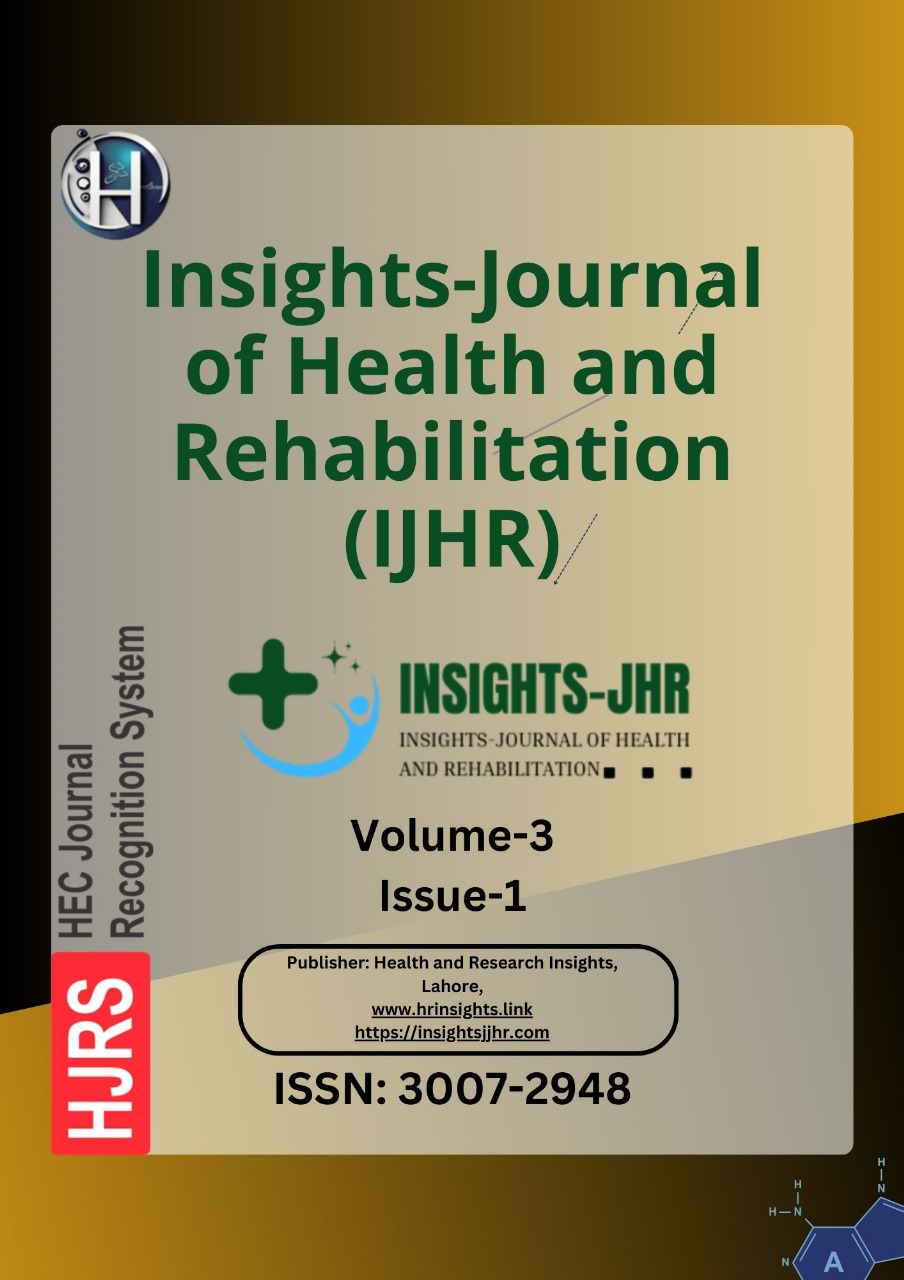ASSESSING KNOWLEDGE AND ATTITUDE AMONG NURSING STAFF REGARDING TRACHEOSTOMY CARE AT THE UNIVERISTY OF LAHORE TEACHING HOSPITAL
DOI:
https://doi.org/10.71000/zhb9y211Keywords:
Attitude, critical care, intensive care units, knowledge, nursing staff, tracheostomy, tracheostomy careAbstract
Background: Tracheostomy is a critical surgical procedure that provides an alternative airway for patients with respiratory compromise or requiring prolonged mechanical ventilation. Effective management of tracheostomy care is essential to prevent complications such as tube obstruction, infection, and accidental decannulation. Nursing staff play a pivotal role in tracheostomy management, yet variations in knowledge and attitude can impact patient safety. Despite the increasing use of tracheostomy in critical care settings, gaps in standardized training and guideline-based practices remain a concern.
Objective: This study aimed to assess the knowledge and attitude of nursing staff regarding tracheostomy care at the University of Lahore Teaching Hospital.
Methods: A quantitative, cross-sectional descriptive study was conducted among 36 nurses working in surgical wards, intensive care units, and critical care settings. A structured questionnaire assessed demographic data, knowledge, and attitude toward tracheostomy care. The knowledge section included ten multiple-choice questions scored as 1 for incorrect and 2 for correct answers, while attitude was evaluated using a five-item linear scale. Data were analyzed using descriptive statistics with SPSS version 25.0.
Results: Among the participants, 41.7% were male and 58.3% were female. Good knowledge (>15/20) was observed in 72.2% of nurses, while 22.2% had average knowledge (13–15/20), and 5.6% demonstrated poor knowledge (≤12/20). Regarding attitude, 69.4% had a positive approach (>5/10), whereas 30.6% exhibited a poor attitude (≤5/10). Higher education and greater clinical experience correlated with better knowledge and attitude scores.
Conclusion: Although the majority of nurses demonstrated good knowledge and a positive attitude toward tracheostomy care, a small proportion exhibited deficits that could impact patient outcomes. Targeted educational programs, hands-on training, and structured guidelines are recommended to enhance nursing competency in tracheostomy management.
Downloads
Published
Issue
Section
License
Copyright (c) 2025 Qubra Bibi, Muhammad Saifullah, Aleena Arooj, Muhammad Liaqat (Author)

This work is licensed under a Creative Commons Attribution-NonCommercial-NoDerivatives 4.0 International License.







